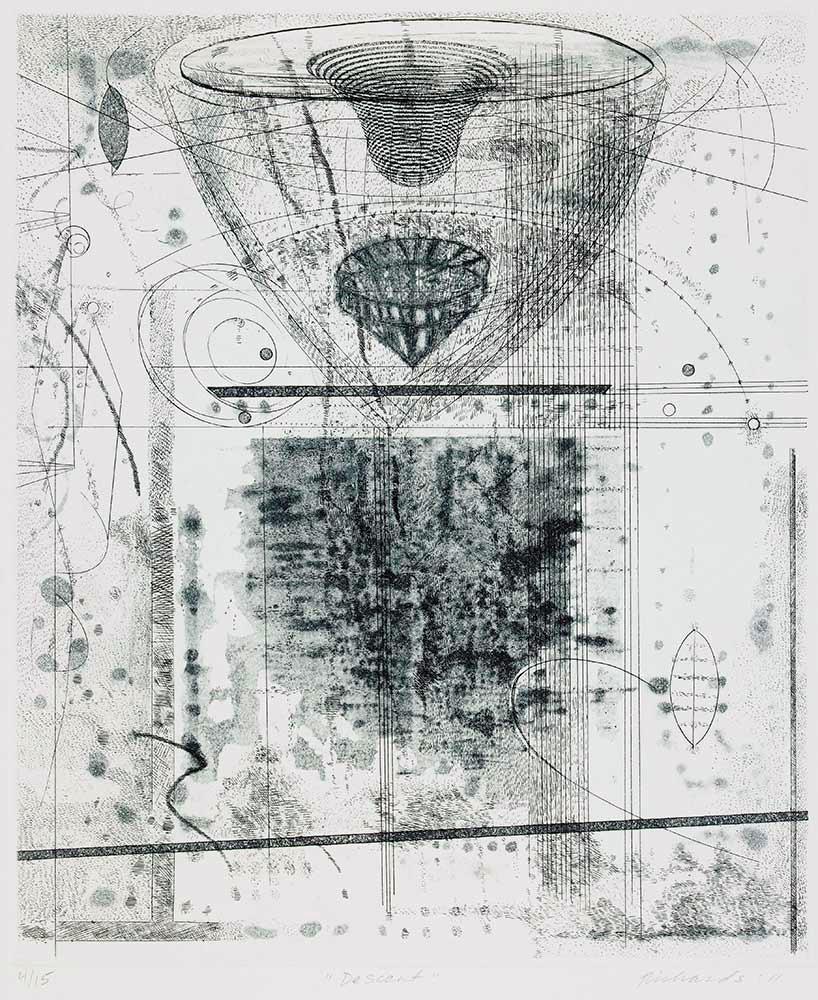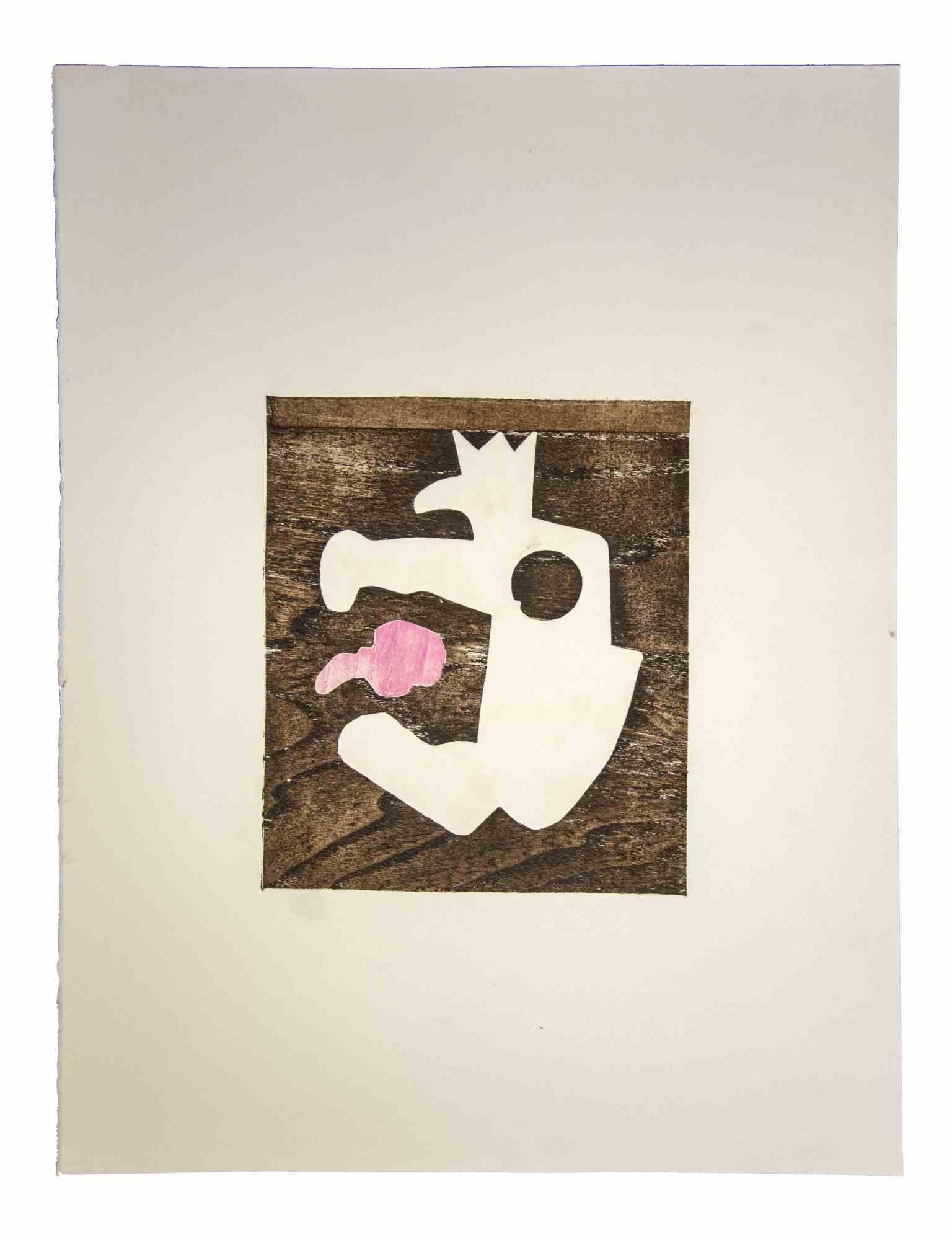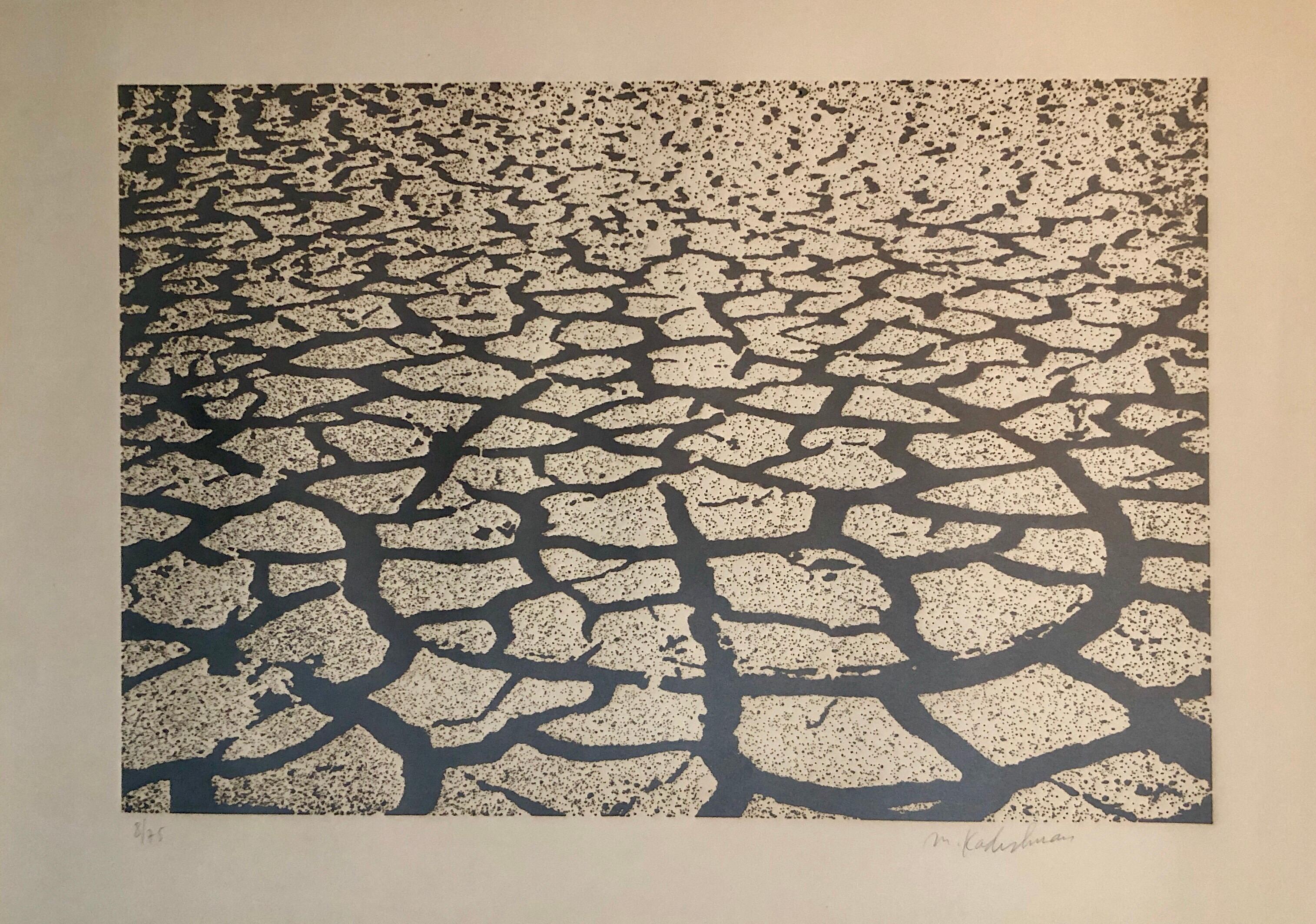Items Similar to Survivor
Want more images or videos?
Request additional images or videos from the seller
1 of 5
Ray H. FrenchSurvivor1981
1981
About the Item
Signed , dated and titled in pencil by the artist
Artist proof from the second printing by Jon Clemens
Annotated "To Jon from Ray"
- Creator:Ray H. French (1919-2000, American)
- Creation Year:1981
- Dimensions:Height: 13 in (33.02 cm)Width: 20 in (50.8 cm)
- Medium:
- Movement & Style:
- Period:
- Condition:Excellent original condition, deckled edges intact.
- Gallery Location:Fairlawn, OH
- Reference Number:
About the Seller
5.0
Recognized Seller
These prestigious sellers are industry leaders and represent the highest echelon for item quality and design.
Platinum Seller
These expertly vetted sellers are 1stDibs' most experienced sellers and are rated highest by our customers.
Established in 1978
1stDibs seller since 2013
713 sales on 1stDibs
Typical response time: 1 hour
Associations
International Fine Print Dealers Association
- ShippingRetrieving quote...Ships From: Fairlawn, OH
- Return PolicyA return for this item may be initiated within 10 days of delivery.
More From This SellerView All
- Trees (Trees in Circle)By Louise NevelsonLocated in Fairlawn, OHTrees (Trees in Circle) Etching & drypoint with monotype inking, 1953-1955 Signed in pencil An unrecorded trial proof, printed on heavy wove proofing paper at Atelier 17, before the ...Category
1950s Abstract Landscape Prints
MaterialsDrypoint, Etching, Monotype
- Matsu (Pine)Located in Fairlawn, OHMatsu (Pine) Woodcut, 1968 Signed: "'Matsu' Naoko Matsubara" in pencil by the artist (see photo) Annotated in pencil "Ed 25" (see photo) Edition: 25 Condition: 7" long waterstain at bottom edge of sheet starting ca. 6" in from lower left corner. Does not effect image. Light foxing throughout, especially in margins. Matting covers the foxing up. Image size: 22 x 43 1/4 inches Naoko Matsubara (1937 - ) Matsubara Naoko (松原直子) was born in 1937 on Shikoku Island into an old Shinto family, and grew up in Kyoto, where her father was a senior priest. She was educated at the Kyoto Academy of Fine Art (BFA, 1960); and was a Fulbright Scholar at what is now Carnegie Mellon University, Pittsburgh (MFA, 1962). She was also a Special Invited Student at the Royal College of Art in London (1962). After travelling extensively in Europe and Asia, Naoko Matsubara returned to Japan for two years, before being lured back to the United States. There she worked as personal assistant to the late Prof. Fritz Eichenberg, and also taught at the Pratt Institute of Graphic Art in New York, as well as at the University of Rhode Island. Subsequently she lived in Cambridge, Mass. In 1972 Naoko Matsubara moved to Canada, and now lives in Oakville, Ontario. She has continued to be extremely active as an artist: locally, nationally and internationally. Since 1960 she has had some 75 solo exhibitions, in the USA, Canada, Japan, England, Ireland, Germany, Austria, Switzerland, Holland and Mexico. She has also participated in numerous group exhibitions. Public collections owning work by Naoko Matsubara include: Albertina, Vienna; Art Institute of Chicago; British Museum; Carnegie Institute; Museum für Kunst und Gewerbe, Hamburg; Museum of Fine Arts, Boston; Philadelphia Museum of Art; Cincinnati Art Museum; Detroit Institute of Art; Fogg Art Museum, Harvard University; Haifa Museum, Israel; Kyoto National Museum of Modern Art; Royal Ontario Museum; The White House, Washington DC; Tokyo National Museum of Modern Art; Yale University Art Gallery. Naoko Matsubara has published some 20 books and portfolios of her work, including most recently Tibetan Sky (Calgary: Bayeux Arts Publishers, 1997; Preface by the Dalai Lama); Tokonoma (Bath, England: Old School Press, 1999); and Konjaku monogatari (Tokyo: ALIS, 2002). Her work also includes a large mural and donor pillar for the new YMCA building in Oakville, Ontario (2003); mixed-media screens; and paintings. In 2005, the Royal Ontario Museum commissioned two large works from Naoko Matsubara for the Museum's Bloor Street window case. The artist generously donated a third work, Emerald Summer (2006). The three works (each 195 cm. high by 95 cm. wide) will be rotated at regular intervals into the outside window. This is the first commissioned artwork to be displayed on the Museum’s Bloor Street Plaza. Recent major exhibitions have been in Tokyo, Kyoto, Indiana, and Toronto (Royal Ontario Museum). Further exhibitions are currently being planned in Seattle and Tokyo; new books in process include In Praise of Hands. She also continues to travel widely; is frequently invited to speak about her work; and also publishes essays, in both English and Japanese. Naoko Matsubara’s work has been the subject of countless articles and reviews; documentary films (including two from the Canadian Broadcasting Corporation); and several book-length publications: notably Mokuhan: The Woodcuts of Munakata and Matsubara (text by Joan Stanley-Baker; Victoria, BC: Art Gallery of Greater Victoria, 1976); Naoko Matsubara: Development of Artistic Style and Technique (text by Barbara Woodworth; MFA thesis, Harvard University, 1985);.and Tree Spirit...Category
1960s Abstract Landscape Prints
MaterialsWoodcut
- French StacksBy Donald SultanLocated in Fairlawn, OHFrench Stacks Linocut printed in color Unsigned Stamped verso “Imprimerie Arnera Archives/Non Signe” Printer: Jaime Arnera, Vallarius, France (their stamp verso) Condition: Printed ...Category
1980s Abstract Expressionist Landscape Prints
MaterialsLinocut
- A L'Ombre (In Shadow)By Louis LegrandLocated in Fairlawn, OHA L'Ombre (In Shadow) Etching & drypoint, 1905 Signed with the red stamp of the publisher Pellet (see photo) Edition: 50 on velin paper, signed and numbered Publisher: Gustav Pellet, Paris (his red stamp lower right, recto; Lugt 1193) Condition: Excellent Image/Plate size: 5-7/8 x 8-5/8" (14.8 x 21.8 cm.) Sheet size: 11 5/8 x 17 1/8" Reference: IFF 119 Exteens 229 Arwas 256 v/V Louis Auguste Mathieu Legrand (29 September 1863 – 1951) was a French artist, known especially for his aquatint engravings, which were sometimes erotic. He was awarded the Légion d'honneur for his work in 1906. Life Legrand was born in the city of Dijon in the east of France. He worked as a bank clerk before deciding to study art part-time at Dijon's Ecole des Beaux-Arts. He won the Devosge prize at the school in 1883.[2] In 1884 Legrand studied engraving under the Belgian printmaker Félicien Rops. Legrand's artworks include etchings, graphic art and paintings. His paintings featured Parisian social life. Many were of prostitutes, dancers and bar scenes, which featured a sense of eroticism. According to the Hope Gallery, "Louis Legrand is simply one of France's finest early twentieth century masters of etching." His black and white etchings especially provide a sense of decadence; they have been compared to those of Henri de Toulouse-Lautrec, though his drawings of the Moulin Rouge, the can-can dance and the young women of Montmartre preceded Toulouse-Lautrec's paintings of similar scenes. He made over three hundred prints of the night life of Paris. They demonstrate "his remarkable powers of observation and are executed with great skill, delicacy, and an ironic sense of humor that pervades them all." Two of his satirical artworks caused him to be tried for obscenity. The first, "Prostitution" was a symbolic drawing which depicted a naked girl being grasped by a dark monster which had the face of an old woman and claws on its hands; the second, "Naturalism", showed the French novelist Émile Zola minutely studying the thighs of a woman with a magnifying glass. Defended by his friend the lawyer Eugène Rodrigues-Henriques (1853–1928), he was found not guilty in the lower court, but was convicted in the appeal court and then given a short prison sentence for refusing to pay his fine. Legrand was made famous by his colour illustrations for Gil Blas magazine's coverage of the can-can, with text by Rodrigues (who wrote under the pseudonym Erastene Ramiro). It was a tremendous success, with the exceptional quantity of 60,000 copies of the magazine being printed and instantly sold out in 1891. In 1892, at the instigation of the publishing house Dentu, Legrand made a set of etchings of his Gil Blas illustrations. The etchings were published in a book, Le Cours de Danse Fin de Siecle (The End of the Century Dance Classes). Legrand took a holiday in Brittany, which inspired him to engrave a set of fourteen lithographs of simple country life called Au Cap de la Chevre (On Goat Promontory). It was published by Gustave Pellet who became a close friend of Legrand's. Pellet eventually published a total of 300 etchings by Legrand, who was his first artist; he also published Toulouse-Lautrec and Félicien Rops among others. He did not only work in graphics; he exhibited paintings at the Paris salon of the Société Nationale des Beaux-Arts starting in 1902. In 1906 he was made a chevalier of the Légion d'honneur. Legrand died in obscurity in 1951. A retrospective exhibition was held at the Félicien Rops museum in Namur, Belgium in 2006 to celebrate his graphic art. The art collector Victor Arwas published a catalogue raisonné for the occasion. Books illustrated de Maupassant, Guy: Cinq Contes Parisiens, 1905. Poe, Edgar Alan: Quinze Histoires d'Edgar Poe...Category
Early 1900s Art Nouveau Landscape Prints
MaterialsEtching
- Minneapolis at DuskBy Richard HaasLocated in Fairlawn, OHMinneapolis at Dusk Etching & aquatint printed in colors, 1993 Signed, titled and numbered in pencil Edition: 65 (19/65) Condition: Excellent This image depicts the Wells Fargo Center designed by Cesar Pelli Richard Haas (American, b.1936) is a practitioner of the trompe l'oeil artistic style, a technique that uses realistic images in a way that tricks the eye into perceiving the painting in three dimensions. Haas has painted hundreds of murals that incorporate trompe l'oeil methods in the depiction of the architectural features of the building. He was born in Spring Greene but grew up in Milwaukee, WI. He graduated in 1959 from the University of Wisconsin-Milwaukee with a Bachelor in Art. Instructors for his courses included Joseph Friebert (American, 1908–2002) and Robert Von Neuman (German, 1888–1976). Haas returned to his birthplace to work as a helper for his stonemason uncle, and he had an opportunity to view the work of the architect Frank Lloyd Wright (American, 1867–1959). He spent several years as an assistant professor at the University of Michigan before he moved to New York City in 1968. Haas spent 10 years teaching at Vermont's Bennington College, splitting his time between the school and New York. Haas worked for many years as an Abstract painter who used traditional canvas media. He later developed an interest in drawing and etching the details of late 19th century and early 20th century New York City buildings. The artist’s first outdoor mural, a commission to paint the cast iron façade at the corner of Prince Street and Greene Street, was completed in 1975. His other notable murals include Fort Worth, Texas' Homage to Chisholm Trail...Category
1990s Photorealist Landscape Prints
MaterialsEtching
- La Grande Cascade de Saint CloudBy Alfredo MüllerLocated in Fairlawn, OHLa Grande Cascade de Saint Cloud Color aquatint on watermarked Arches J Perrigot paper, 1905 Signed by the artist in pencil lower right. (see photo) Edition: 100. Numbered "39" in pencil lower left. Titled in pencil verso Published by Edmund Sagot, Paris, his dry stamp lower right below signature. Image: 23-1/8 x 17-3/8" (58.7 x 44 cm.) From the British Museum: "Colour etcher. Born in Livorno from a family of wealthy Swiss cotton merchants, studied with Giuseppe Ciaranfi and Michele Gordigiani in Florence. In 1886 exhibited with Fattori, Achille Lega and Tommasi in the Prima Esposizione delle Belle Arti in Livorno. In 1888 he and his family moved to Paris, where he studied first with François Flameng until 1892 and later with Carolus-Duran. Müller remained in the French capital until the outbreak of the First World War, taking French citizenship in 1913. He worked in the countryside at Barbizon, Suresnes and elsewhere, but also made frequent visits to his native country, where he exhibited regularly in Florence with the Promotrice Fiorentine. His early work was indebted to Fattori and Plinio Nomellini, but he soon became interested in the Impressionists and was credited by the critic Mario Tinti with introducing the luminism of Monet into Italian art. Müller was a member of the Société des Artistes Indépendents and exhibited regularly in the Paris dealer George Petit's annual exhibitions of colour prints. He made his first print in 1896, a lithographic portrait of the poet Paul Verlaine in the Café Procope. The following year Müller made his first colour aquatints. Among them were a series of illustrations to Dante's Divine Comedy. In style his etchings and aquatints were influenced by Manuel Robbe. Very occasionally he combined drypoint or soft ground etching with aquatint. Müller's principal publisher was Pierrefort, who also issued prints by Toulouse-Lautrec. After 1903 he largely abandoned aquatint for pure etching. Fourteen of his colour etchings were reproduced over a number of months in the weekly magazine 'Le Courrier français'. Müller also made a small number of colour lithographs, some of which were published by the Parisian print dealer Sagot. A single monotype of Mallarmé done in 1911, thirteen years after the poet's death in 1898, is recorded. Müller made a few landscape prints and a couple of etchings of fishing boats, but his principal subject was young women in long dresses. Often there is an aura of fin-de-siècle wistfulness. When he returned to Italy, he lived first in Taormina, then in Florence, and finally settled in a villa at Settignano. Müller largely abandoned printmaking after 1914. Only three more prints by him made in 1920, 1925 and 1933 are recorded after he moved back to his native country. Müller was a regular exhibitor in Florentine exhibitions, the most significant of which was the 1922 Primaverile Fiorentina. He returned to France in 1930 where he died in 1939. (Text by Martin Hopkinson)" Said to rival the fountains at Versailles, La Grande Cascade is still turned on for a few hours every Sunday in June. The Grande Cascade, constructed in 1664-1665 by Antoine Le Pautre has survived. The château was expanded by Phillipe de France, duc d'Orléans in the 17th century, and finally enlarged by Marie Antoinette in the 1780s. Napoleon I and Napoleon III also used the palace, which was a U-shaped scheme of three sections, open to the east. Destroyed by fire (with the exception of a few outbuildings and its majestic garden) in 1870, during the Franco-Prussian War. The burned-out shell stood until 1891, when it was demolished. The gardens were replanned by André Le Nôtre...Category
Early 1900s French School Prints and Multiples
MaterialsAquatint
You May Also Like
- DescentBy Rosalyn RichardsLocated in Palm Springs, CASigned, titled and numbered in pencil, edition of 15. Rosalyn Richards has been a member of the Bucknell University art faculty since 1982. Images from particle physics, satellite p...Category
21st Century and Contemporary Abstract Abstract Prints
MaterialsEtching, Aquatint
- Composition - Original Etching by Leo Guida - 1970sBy Leo GuidaLocated in Roma, ITComposition is an original etching realized by Leo Guida in 1970s. Good condition. Mounted on a white cardboard passpartout (50x35). Not signed and not dated. Leo Guida (1992 - ...Category
1970s Abstract Figurative Prints
MaterialsEtching
- Composition - Original Etching by Leo Guida - 1970sBy Leo GuidaLocated in Roma, ITComposition is an original etching realized by Leo Guida in 1970s. Good condition. Mounted on a white cardboard passpartout (50x35). Not signed and not dated. Leo Guida (1992 -...Category
1970s Abstract Figurative Prints
MaterialsEtching
- Israeli Modern Pop Art Photo Silkscreen Serigraph Palm Trees KadishmanBy Menashe KadishmanLocated in Surfside, FLMenashe Kadishman was born in Tel-Aviv in 1932. He is a Graduate of St. Martin's School of Art, University of London Studies with Anthony Caro, Reg Butler. From 1947 to 1950, Kadish...Category
1970s Abstract Geometric Landscape Prints
MaterialsEtching, Aquatint, Lithograph
- Israeli Modern Pop Art Aquatint Etching Cracked Earth Art Kadishman LithographBy Menashe KadishmanLocated in Surfside, FLThis one is a metallic silver gray color. Menashe Kadishman was born in Tel-Aviv in 1932. He is a Graduate of St. Martin's School of Art, University of London Studies with Anthony Ca...Category
1970s Abstract Geometric Landscape Prints
MaterialsEtching, Aquatint, Lithograph
- Parliament Hill London with Etching Print by John DuffinBy John DuffinLocated in Deddington, GBThis limited edition etching is a view of London looking down from Parliament Hill at dusk on an early autumn evening. I have loved this view ever since i moved to London as a studen...Category
21st Century and Contemporary Abstract Landscape Prints
MaterialsEtching
Recently Viewed
View AllMore Ways To Browse
Printing Proof
Tiffany Chinese New Year
Peter Max Sailboat
Bavarian Mirror
Edward Hopper Etching
Indian Mirrored Blanket
Japanese Floral Woodblock Print
Mulberry Backpack
South Coast Tiffany
Tiffany Studios Clothing
Ernest Roth
O T Clark
Kipniss Robert
Eric Ravilious
Audubon Amsterdam Edition
Old Tiffany Catalogs
Vintage Bodega
Carol Carpenter





